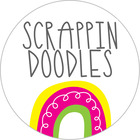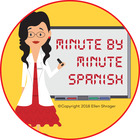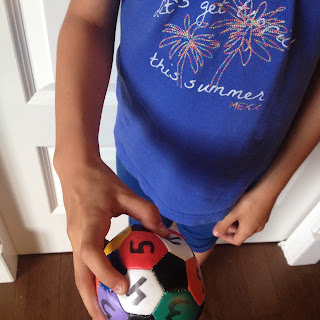5 Ways to Empower Students
in the Classroom
Empowerment, what a strong,
influential word
and when you eliminate the prefix and the suffix, power remains.
What is power?
How does it make you feel?
For a student learning in a classroom, it can
define the difference between success and failure. Empowerment by all definitions basically is a
combination of providing useful tools, information, motivation, opportunity,
responsibility, and a voice, which are key factors in obtaining a positive
outcome.
Many times, students find themselves lacking certain aspects of empowerment and in return, a loss of interest occurs and failure soon follows. For example, let’s say you were making a cake, and the most important ingredient is flour, and you didn’t have it. Are you going to be able to make that cake? Of course not, and just like the ingredients required to make a cake, empowerment also requires all ingredients included in the recipe in order to be successful.
Teachers’ personalities vary from classroom to classroom, and subject to subject, but they all have that one common goal, to teach. A student on the other hand, their first priority is not to learn, they may like school and want to be there, however, I’m positive it’s for other ulterior motives, such as friends, social activities, and fitting in. This in itself creates an obstacle that teachers need to overcome.
1.First day of school,
bait them like a fish
First day of school is the most exciting day of the year, with the exception of the last. Students are fresh, lively, and eager when they enter the classroom. You, as the teacher have approximately 5 minutes to grab those students’ attention, and retain it, which means you better have a plan.
There is nothing more boring than sitting down at your desk and the only introduction to the class is “Welcome to Algebra, here’s your textbook, and by the way I’m Mrs. Smith”. Right at that singular moment, interest and excitement, is completely eliminated, especially if a monotone voice accompanies that sentence.
Your mission, as a teacher is to immediately bait those students of yours with enthusiasm and adventure, similar to baiting fish with a worm. This term is referred to as an enticement and is accompanied by gestures such as interaction with your students. Move around, tell jokes, hype up projects and engage them into the conversation by allowing input and questions.
Getting students involved and eager to continue is the first step to empowerment.
2.Put the boring tools away
One of the specific downfalls to teaching is limitations and expectations delivered from the educational gurus of the industry. Certain standards are set in place and teachers must follow those guidelines, in order to retain their employment. That’s understandable; however, teaching doesn’t need to be boring for you or your students in order for them to learn what is necessary.
For example, technology is advancing at whirlwind speeds and students love technology. As much as we hate to admit it, standard textbook, pen and paper teaching is not always fun.
It’s time to set aside the old and move on to the new. Engaging students in technology by combining the required specifics of the class with an interaction to computer programs will not only fulfill the requirements of standards, but will also boost the imagination and creativity of the student. In otherwise, keeping them engaged.
PowerPoint presentations are a good example of pairing a required report with an unlimited resource. Students can and will explore their freedom to create, meaningful, expressive presentations to impress their peers. This empowerment feature is called pride. They are taking pride in something they have accomplished. It’s a tool they can utilize on their own, or as a team project.
3.Know your students strengths
and weaknesses
 Generally, teachers are fairly keen to what each of their students excel at and struggle with. And of course, most tend to focus on the areas a student is lacking; however, it’s equally important to allow a student to exhibit his/her strengths as well.
Generally, teachers are fairly keen to what each of their students excel at and struggle with. And of course, most tend to focus on the areas a student is lacking; however, it’s equally important to allow a student to exhibit his/her strengths as well.
Students are excited to demonstrate qualities they are familiar and comfortable with, therefore, let them shine. This will in turn boost their confidence and give them a sense of identity and worth.
A fun and helpful exercise that I find beneficial is placing students in groups, with each student having a specific skill that they excel in. Present a project as an experiment. Let the students decipher who will take on certain tasks according to their heightened skill. What was the presumed outcome? An Individualized accomplishment took place, not a group effort because they didn’t have to depend on anyone else for assistance.
Now, reverse the scenario. Assign students a task which they are not comfortable with, or are lacking knowledge in. Have them work in groups as they did in the first exercise, emphasize the importance of communication, assistance, and team work. Hopefully, at the end of this exercise you will have witnessed, students working together, building confidence and motivation, and assisting their peers in overcoming boundaries. For a student, there is no greater empowerment than succeeding where they thought they could not.
4.Reward the positive,
avoid the negative
Wow, what a concept!
Focusing on positive results and rewarding for such, builds confidence, self-esteem, and the willingness to continue. On the other hand, by constantly pointing out flaws will create an adverse effect on the student, causing them to feel useless and unimportant, and therefore losing empowerment.
For instance, a student that continuously tries, but is having difficulties grasping the concept of an assignment will more than likely turn in less than acceptable work. As a teacher, you understand the frustrations with shoddy, unimpressive work. With that being said, attempt to find something of value with the assignment, and emphasize the strengths of it, offer suggestions to help correct the issues that are unsatisfactory.
If the student understands that you appreciate his/her attempts, along with helping them improve by using positive influences, instead of negative, they won’t view the constructive criticism as a threat.
Words like – The concept is great, maybe you can add (blank), or, I really enjoyed (blank), I think it would be great if (blank). Try avoiding words like “but”, “can’t” and “not” or any other similar, negative words. Keep in mind, you are trying to empower your students, not bring them down to where they might feel inadequate.
5.A teacher’s word is final, but let your students lead sometimes
A teacher’s role in the classroom is to be the leader. Assignments, projects, and deadlines are all dealt out by you. However, if instructions are constantly given without flexibility or choices, then how are your students ever going to learn to think for themselves?
Of course, there are boundaries that require being followed, but that doesn’t insinuate that your students can’t have a voice. Encouraging participation and ideas generate leadership. Leadership is empowering. By allowing a student to make a choice, or present suggestions that you might or might not accept, will build up the desire to achieve and build confidence because they were heard.
In conclusion, the purpose for these 5 ways to empower students in the classroom is to generate a future of successful adults. Learning can be hard enough, especially if students aren’t enthused or self-gratified. Empowering students in the classroom will not only make their educational years fulfilling, but will also empower the teacher as well, knowing that they were a success with their students.




























